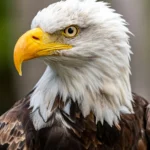
Travel tales
Watching Bald Eagles during their Migration to CDA in 2024
Lake Coeur d’Alene
Our love of the majestic Bald Eagle (found only in North America) has a long and sometimes sad history in our country. The Bald Eagle first appeared on a Massachusetts copper cent coined in 1776. Since then it has appeared on many U.S. coins, including the quarter, silver dollar and half dollar, as well as gold coins. Our founding fathers chose the Bald Eagle to be the national emblem in 1782. Scientists estimate populations of roughly 25,000 birds at the time of the first Europeans settling here. By 1970, only 1,500 breeding pairs could be found nationwide. In Idaho, the number of known, occupied Bald Eagle nesting territories has gradually increased from 11 in 1979 to 234 in 2007! To learn more, click Bald Eagles in Idaho.
Important Items to take into consideration
If you weren’t able to witness the majestic birds during their record breaking migration at the end of 2023, start planning for 2024. We will review some important items to take into consideration before you make your pilgrimage to see the migrating population of Bald Eagles up close and personal.
- Our experience watching the Bald Eagles.
- Coordinate your schedule to coincide with the best time to view as many Bald Eagles as possible.
- Come prepared with the right tools for viewing the birds from a safe distance.
- Research viewing tips for safely and comfortably observing the majestic birds at a location that meets your families’ needs.
- Understand more about Bald Eagles mating and migration habits.
Important Items to take into consideration
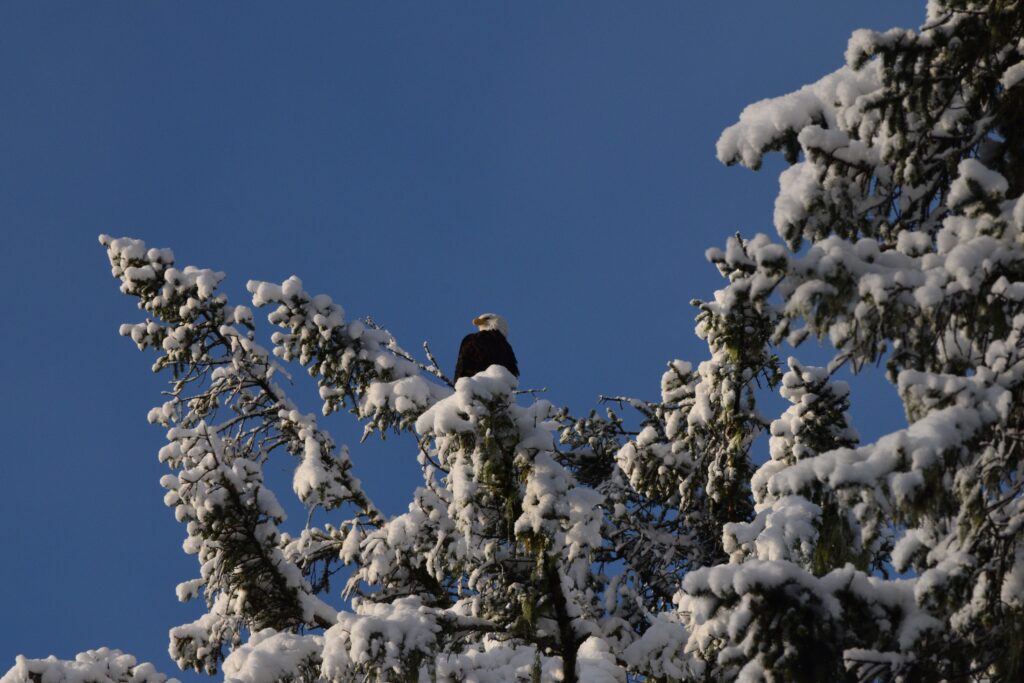
If you weren’t able to witness the majestic birds during their record breaking migration at the end of 2023, start planning for 2024. We will review some important items to take into consideration before you make your pilgrimage to see the migrating population of Bald Eagles up close and personal.
- Our experience watching the Bald Eagles.
- Coordinate your schedule to coincide with the best time to view as many Bald Eagles as possible.
- Come prepared with the right tools for viewing the birds from a safe distance.
- Research viewing tips for safely and comfortably observing the majestic birds at a location that meets your families’ needs.
- Understand more about Bald Eagles mating and migration habits.
The Eagles of Lake Coeur D’Alene
It was January, after the craziness of the holidays, when we made our pilgrimage to Lake Coeur d’ Alene to view the magnificent birds. We loaded the red dogs into their crates and headed east. The numbers were dwindling; however, there were still Bald Eagles everywhere we looked. As we drove around the lake we saw groups of birds flying high overhead. At first glance we thought the gulls were Bald Eagles from a distance because of their white heads, but quickly realized our mistake. We found a safe area to pull off of the main road and got our eyes adjusted to our surroundings. We started noticing white dots in the trees all around. This is the reason you want to have binoculars or scopes to be able to zoom in for a close look. Then we started seeing the Bald Eagles flying over the lake looking for fish. It’s difficult to describe the excitement we felt being so close to these magnificent birds.
We got back in the car to scout out other locations and saw an Eagle perched on a branch eating a fish it had just caught. Further down the road we had the opportunity to watch a beautiful Eagle in a tree close to the water.
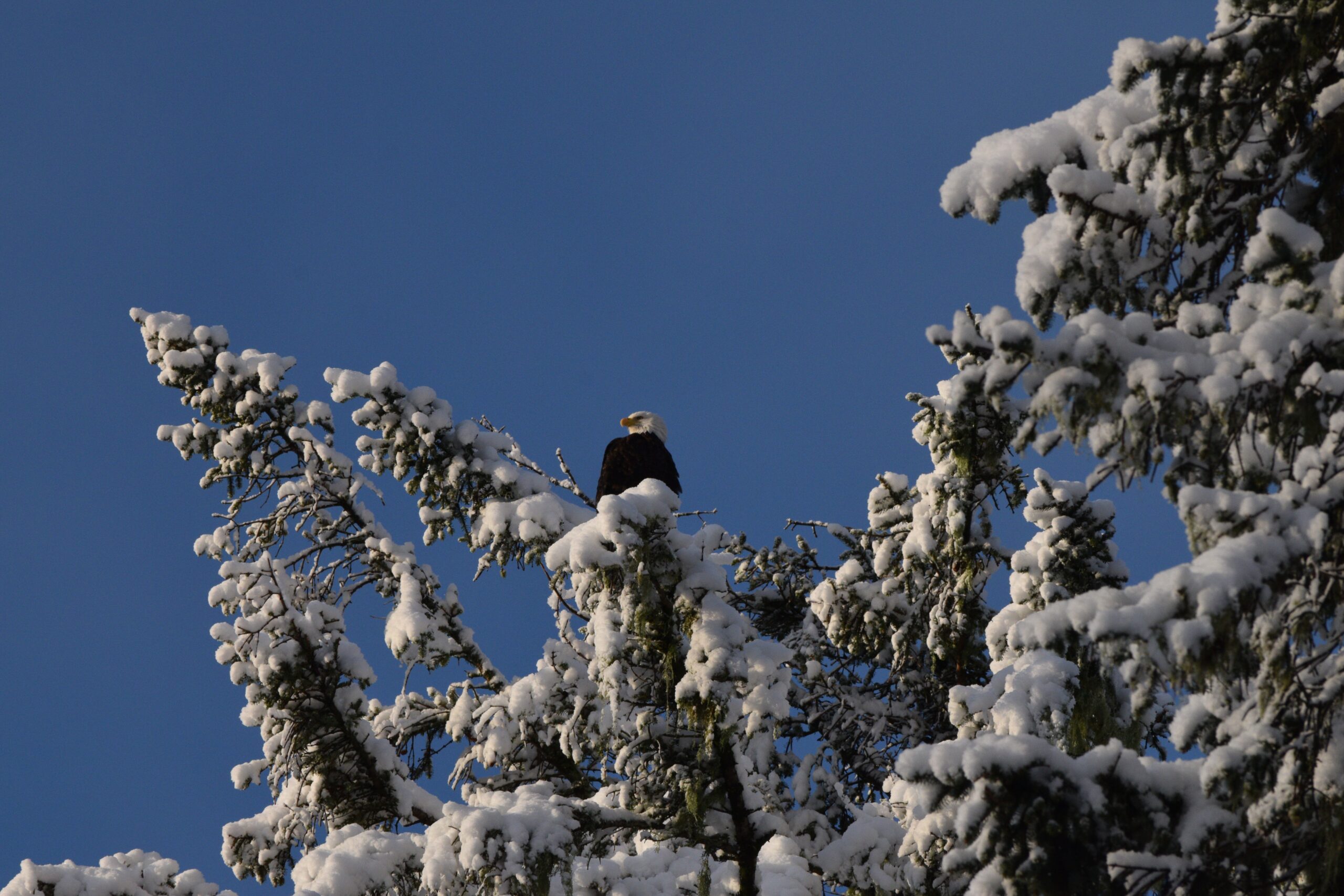
CDA Bald Eagle
The Eagles of Lake Coeur D’Alene
It was January, after the craziness of the holidays, when we made our pilgrimage to Lake Coeur d’ Alene to view the magnificent birds. We loaded the red dogs into their crates and headed east. The numbers were dwindling; however, there were still Eagles everywhere we looked. As we drove around the lake we saw groups of birds flying high overhead. At first glance we thought the gulls were Bald Eagles from a distance because of their white heads, but quickly realized our mistake. We found a safe area to pull off of the main road and got our eyes adjusted to our surroundings. We started noticing white dots in the trees all around. This is the reason you want to have binoculars or scopes to be able to zoom in for a close look. Then we started seeing the eagles flying over the lake looking for fish. It’s difficult to describe the excitement we felt being so close to these magnificent birds.
We got back in the car to scout out other locations and saw an Eagle perched on a branch eating a fish it had just caught. Further down the road we had the opportunity to watch a beautiful Eagle in a tree close to the water.
Best time to view bald eagles
When the water in areas north of us begins to freeze, making fish unavailable, the migrating population of Bald Eagles head our way.
Each winter from late November to as late as February, the landlocked small sockeye salmon called kokanee salmon, gather by the thousands to spawn (the end of their life cycle) and die along the gravel shores of Lake Coeur d’Alene, especially around Wolf Lodge Bay. For Bald Eagles, the kokanee salmon spawn means a feast, and in early December Bald Eagles gather in large numbers around the beautiful waters of lake Coeur d’Alene bay and create one of Idaho’s great wildlife spectacles. The weekly counts vary from year to year largely based on the kokanee salmon population.
The daily life of a Bald Eagle in Wolf Lodge Bay includes an early morning flight from a nightly roost. Feeding activity begins upon arrival at the lake and continues throughout the early morning. Bald Eagles will locate a fish from the air or a perch, glide over the water, and grab the fish with their sharp talons. Feeding slows at mid-day, then resumes late afternoon before the flight back to the roost. Bald Eagle numbers will typically peak between Christmas and New Year’s.
Come prepared with the right tools
It’s highly recommended to bring binoculars or a scope to see the Eagles in detail. In addition to the Eagles in trees nearby, there will undoubtedly be a lot of white spots in the trees across the lake. Once you zoom in, you will see large groups of Eagles quietly perched looking out on the lake ready to take flight for their next meal. If you need to pick up a set of affordable binoculars, these binoculars are a good option. Since it’s likely to be cold, rainy or even snowing, it’s important to bring the appropriate layers to keep everyone warm and dry. It was snowing the day we drove out in search of the eagles. We like the MARMOT Precip Waterproof Rain Jacket.
Best time to view bald eagles
When the water in areas north of us begins to freeze, making fish unavailable, the migrating population of Bald Eagles head our way.
Each winter from late November to as late as February, the landlocked small sockeye salmon called Kokanee Salmon, gather by the thousands to spawn (the end of their life cycle) and die along the gravel shores of Lake Coeur d’Alene, especially around Wolf Lodge Bay. For Bald Eagles, the Kokanee Salmon spawn means a feast, and in early December bald eagles gather in large numbers around the beautiful waters of lake Coeur d’Alene bay and create one of Idaho’s great wildlife spectacles. The weekly counts vary from year to year largely based on the Kokanee Salmon population.
The daily life of a Bald Eagle in Wolf Lodge Bay includes an early morning flight from a nightly roost. Feeding activity begins upon arrival at the lake and continues throughout the early morning. Bald Eagles will locate a fish from the air or a perch, glide over the water, and grab the fish with their sharp talons. Feeding slows at mid-day, then resumes late afternoon before the flight back to the roost. Bald Eagle numbers will typically peak between Christmas and New Year’s.
Come prepared with the right tools
It’s highly recommended to bring binoculars or a scope to see the Eagles in detail. In addition to the Eagles in trees nearby, there will undoubtedly be a lot of white spots in the trees across the lake. Once you zoom in, you will see large groups of Eagles quietly perched looking out on the lake ready to take flight for their next meal. If you need to pick up a set of affordable binoculars, these binoculars are a good option. Since it’s likely to be cold, rainy or even snowing, it’s important to bring the appropriate layers to keep everyone warm and dry. It was snowing the day we drove out in search of the eagles. We like the MARMOT Precip Waterproof Rain Jacket.
fun fact
If you are waiting to hear the Bald Eagle’s call, as you may have come to know from TV shows and movies, prepare to be confused. In reality the Bald Eagle sounds closer to a gull. The bird call used in TV and movies is that of the Red-Tailed Hawk. You can hear both by clicking on the links below.
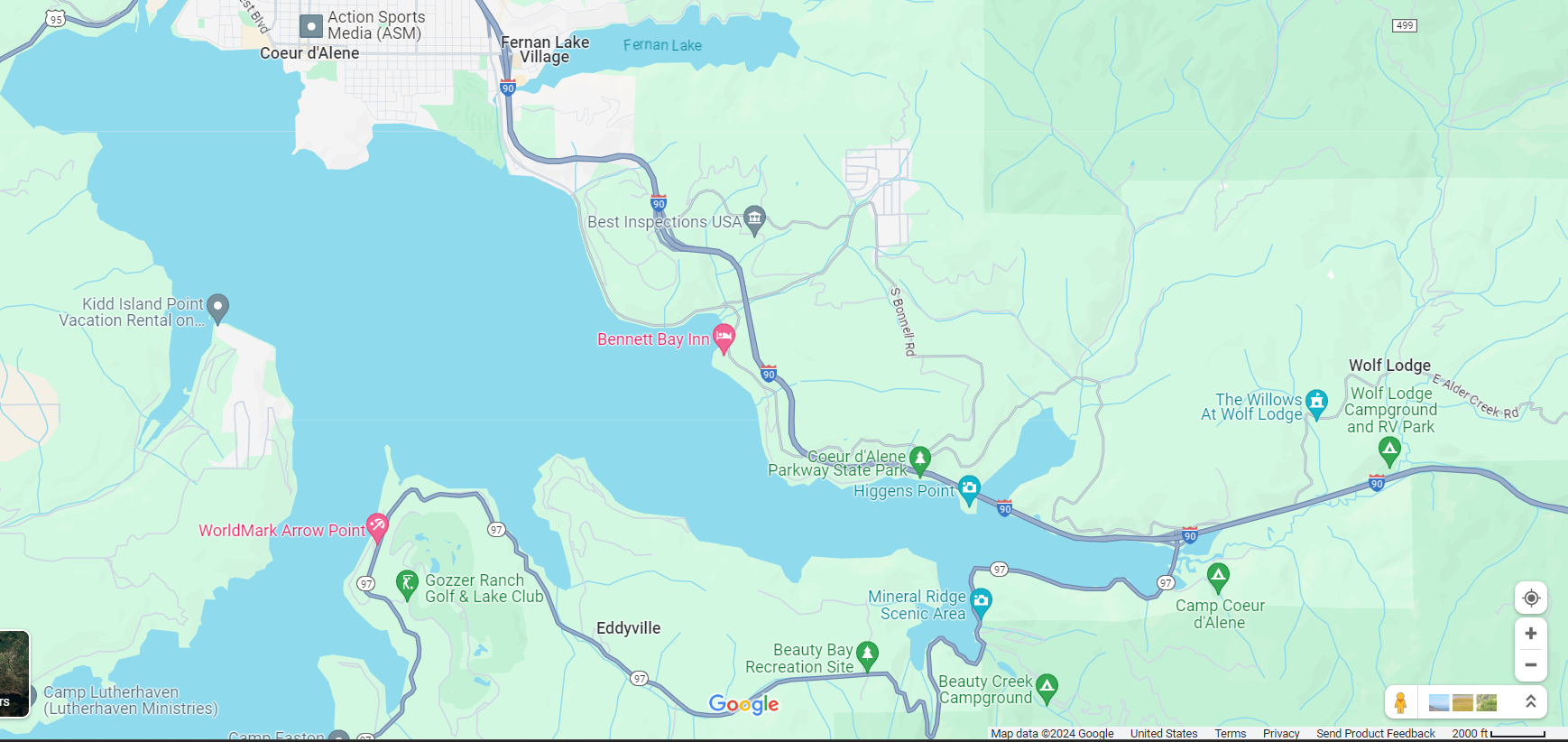
CDA Bald Eagle
Viewing Tips
There are a number of viewing areas from shore, including Higgins Point and the Mineral Ridge boat ramp and trailhead. Bald Eagles are also often abundant at nearby Beauty Bay.
To observe eagles in the Lake Coeur d’Alene area, travel to Higgins Point or Mineral Ridge on Wolf Lodge Bay. Higgin’s point may be one of the safest locations to view from, as there are few pullouts and numerous blind corners on the Mineral Ridge side of the bay. The narrow, single lane roads are heavily congested during the Bald Eagle migration. Please make sure you are following safety protocols at all times. Do not stop on the road or pull over to view the Bald Eagles, unless you can do so safely.
If driving around Lake Coeur d’Alene looking for Bald Eagles and trying to find a safe location to park isn’t your idea of fun, there are a couple of other options available.
Historically the Bureau of Land Management, US Forest Service, Idaho Department of Fish and Game and the Audubon Society join together to sponsor “Eagle Watch Week” at the Mineral Ridge Boat ramp. Last year, it was every day from December 26 through January 1st. Personnel were on hand from 10:00 am until 4:00 pm with spotting scopes and information about Bald Eagles. Call the Bureau of Land Management in CDA at (208-664-2074) to learn the dates for their viewing events in 2024. Bring your thermos full of hot beverages, warm dry layers of clothing and make a day of viewing Bald Eagles, something few in the country have an opportunity to experience up-close.
Drive east from Coeur d’Alene on Interstate 90. Take Wolf Lodge Exit 22. Follow Highway 97 south to exhibits and spotting scopes at the Mineral Ridge boat ramp where volunteers will offer information about the magnificent birds.
Coeur d’Alene Lake Cruises (208-292-5670) offer eagle-watching cruises that depart from the city. These cruises book up fast, so if this is your preferred method of watching Bald Eagles, book your tickets early.
Bald Eagle history
The adult Bald Eagle is easy to recognize because of how its white head and tail contrast sharply with its dark body. The Bald Eagle stands 2 1/2 to 3 1/2 feet tall and has an impressive 6-8 foot wingspan. The female is usually 30 percent larger than the male, averaging 10-14 pounds compared to a male’s 8-10.5 pounds. The adult’s bright yellow feet are strong, unfeathered and equipped with long, sharp black talons for grasping and penetrating prey. The powerful, bright yellow hooked bill is used to tear and dismember prey.
Juvenile Bald Eagles in their first 4 years of life wear mostly dark brown plumage with varying amounts of white, especially on its undersurface. Juvenile Bald Eagles are often mistaken for Golden Eagles (Aquila chrysaeto) because the birds are similar in size. Not until its 4th or 5th year does the Bald Eagle’s head and tail become all white, indicating the bird has reached sexual maturity.
The Bald Eagle’s keen eyesight is eight times more powerful than a human’s. The species’ average lifespan in the wild is unknown, but 30 years is a reasonable estimate. Bald Eagles have been known to survive in captivity for nearly 50 years!
Fun Fact: Did you know that Bald Eagles build the largest nests of any birds in the world?
Bald Eagle nests are among the largest in the world. A pair of eagles, mated for life, will add material to their nest annually. Nests can reach up to 8 feet across and 10 feet deep. Their nests start “small,” but eagles add new layers each year. The biggest one EVER found was 10 feet wide and 20 feet tall and weighed in at 3 tons! Bald Eagles would keep adding to their nests each year, but what happens is that the structures get so heavy they eventually fall out of the tree, and the birds have to start over.
Fun Fact: The Bald Eagle usually stays with the same mate for life. While courting, a pair flies high, links talons, then plummets toward the ground, spinning wildly. This “cartwheel display” ends only when the pair breaks their grip, usually just before they hit the ground.

What to do when you find an injured Bald Eagle
According to the American Bird Conservancy (ABC), although we have done much to bring the population of the Bald Eagles back to safe numbers, they still have many hazards to avoid. Some of the most common risks include collisions from wind turbines, communications towers, and powerlines; lead poisoning; oil spills; dangers posed by newer pesticides; and habitat loss.
ABC has stepped up to address these continuing challenges. Their Bird-Smart Wind Energy campaign works to protect eagles and other U.S. birds from the threat of poorly sited wind turbines. The Conservation Advocacy division continues to defend critical legislation such as the ESA and to promote the conservation and restoration of public lands for the benefit of the Bald Eagle and other North American birds.
Should you find any wild birds who have been injured, please locate your local Wildlife Rehab Center. These groups are dedicated to taking in and helping any injured local wildlife and rehabbing them, ultimately to be released back into their natural habitat.
Most of these groups rely on volunteers to help keep everything running. If you don’t have the extra time to volunteer, consider donating old towels, bedding, etc. Check with your local group to find out what they need. When we all work together to do our part, we are blessed with viewing events like we saw in winter 2023!
Viewing Tips

There are a number of viewing areas from shore, including Higgins Point and the Mineral Ridge boat ramp and trailhead. Bald Eagles are also often abundant at nearby Beauty Bay.
To observe eagles in the Lake Coeur d’Alene area, travel to Higgins Point or Mineral Ridge on Wolf Lodge Bay. Higgin’s point may be one of the safest locations to view from, as there are few pullouts and numerous blind corners on the Mineral Ridge side of the bay. The narrow, single lane roads are heavily congested during the Bald Eagle migration. Please make sure you are following safety protocols at all times. Do not stop on the road or pull over to view the Bald Eagles, unless you can do so safely.
If driving around Lake Coeur d’Alene looking for Bald Eagles and trying to find a safe location to park isn’t your idea of fun, there are a couple of other options available.
Historically the Bureau of Land Management, US Forest Service, Idaho Department of Fish and Game and the Audubon Society join together to sponsor “Eagle Watch Week” at the Mineral Ridge Boat ramp. Last year, it was every day from December 26 through January 1st. Personnel were on hand from 10:00 am until 4:00 pm with spotting scopes and information about Bald Eagles. Call the Bureau of Land Management in CDA at (208-664-2074) to learn the dates for their viewing events in 2024. Bring your thermos full of hot beverages, warm dry layers of clothing and make a day of viewing Bald Eagles, something few in the country have an opportunity to experience up-close.
Drive east from Coeur d’Alene on Interstate 90. Take Wolf Lodge Exit 22. Follow Highway 97 south to exhibits and spotting scopes at the Mineral Ridge boat ramp where volunteers will offer information about the magnificent birds.
Coeur d’Alene Lake Cruises (208-292-5670) offer eagle-watching cruises that depart from the city. These cruises book up fast, so if this is your preferred method of watching Bald Eagles, book your tickets early.
Bald Eagle History
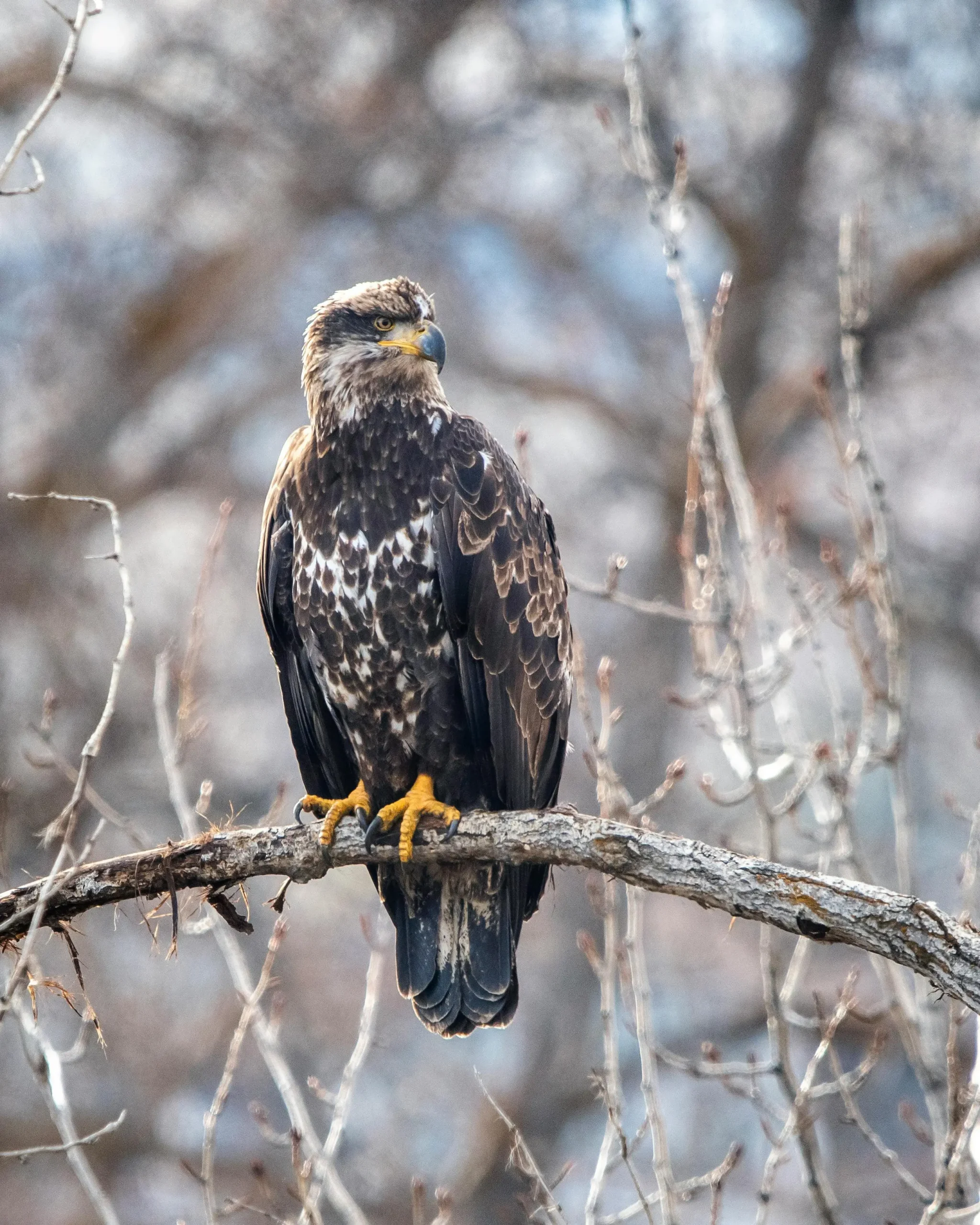
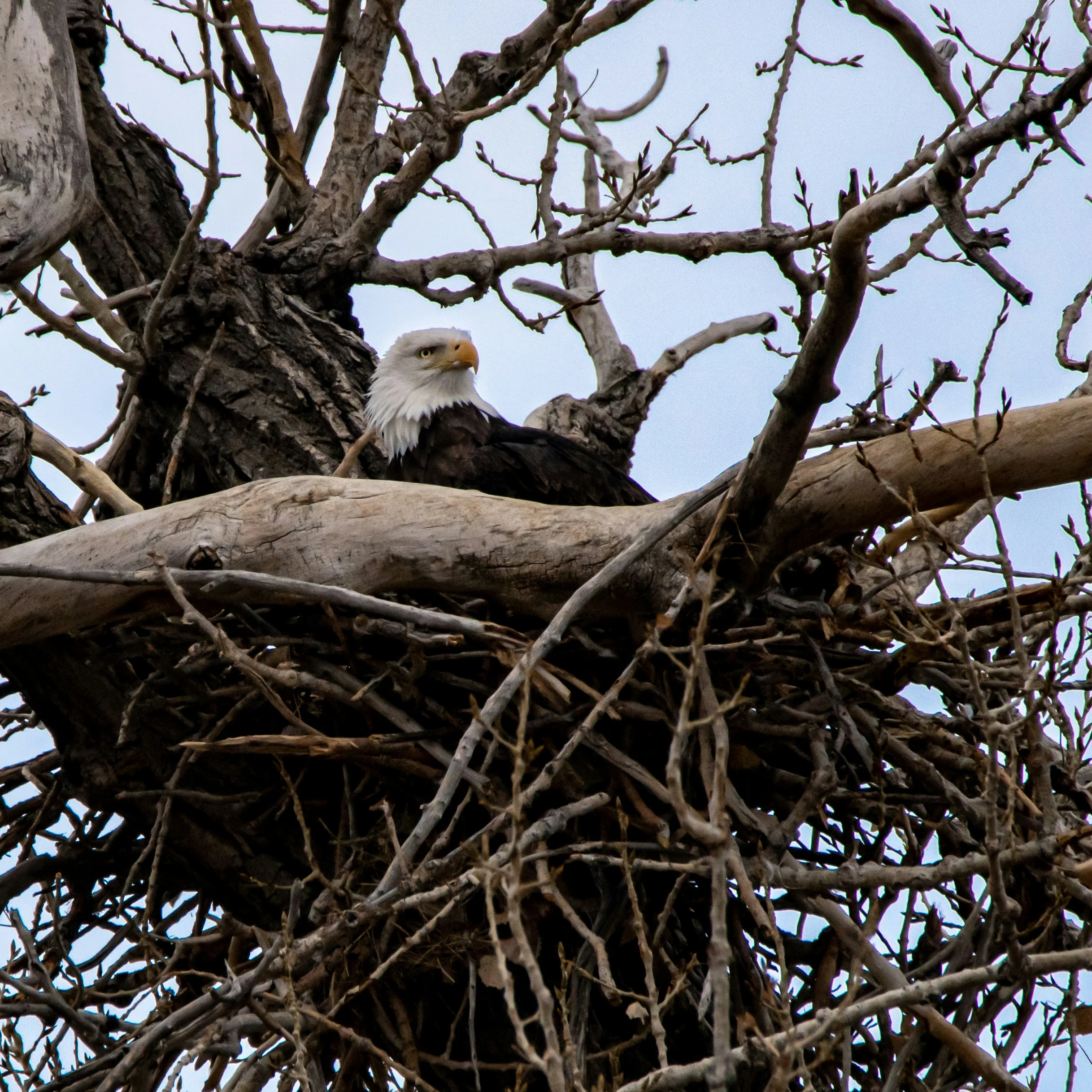
The adult bald eagle is easy to recognize because of how its white head and tail contrast sharply with its dark body. The bald eagle stands 2 1/2 to 3 1/2 feet tall and has an impressive 6-8 foot wingspan. The female is usually 30 percent larger than the male, averaging 10-14 pounds compared to a male’s 8-10.5 pounds. The adult’s bright yellow feet are strong, unfeathered and equipped with long, sharp black talons for grasping and penetrating prey. The powerful, bright yellow hooked bill is used to tear and dismember prey.
Juvenile Bald Eagles in their first 4 years of life wear mostly dark brown plumage with varying amounts of white, especially on its undersurface. Juvenile Bald Eagles are often mistaken for golden eagles (Aquila chrysaeto) because the birds are similar in size. Not until its 4th or 5th year does the bald eagle’s head and tail become all white, indicating the bird has reached sexual maturity.
The eagle’s keen eyesight is eight times more powerful than a human’s. The species’ average lifespan in the wild is unknown, but 30 years is a reasonable estimate. Eagles have been known to survive in captivity for nearly 50 years!
Fun Fact: Did you know that Bald Eagles build the largest nests of any birds in the world?
Bald Eagle nests are among the largest in the world. A pair of eagles, mated for life, will add material to their nest annually. Nests can reach up to 8 feet across and 10 feet deep. Their nests start “small,” but eagles add new layers each year. The biggest one EVER found was 10 feet wide and 20 feet tall and weighed in at 3 tons! Bald Eagles would keep adding to their nests each year, but what happens is that the structures get so heavy they eventually fall out of the tree, and the birds have to start over.
Fun Fact: The Bald Eagle usually stays with the same mate for life. While courting, a pair flies high, links talons, then plummets toward the ground, spinning wildly. This “cartwheel display” ends only when the pair breaks their grip, usually just before they hit the ground.
What to do when you find an injured bald eagle
According to the American Bird Conservancy (ABC), although we have done much to bring the population of the Bald Eagles back to safe numbers, they still have many hazards to avoid. Some of the most common risks include collisions from wind turbines, communications towers, and powerlines; lead poisoning; oil spills; dangers posed by newer pesticides; and habitat loss.
ABC has stepped up to address these continuing challenges. Their Bird-Smart Wind Energy campaign works to protect eagles and other U.S. birds from the threat of poorly sited wind turbines. The Conservation Advocacy division continues to defend critical legislation such as the ESA and to promote the conservation and restoration of public lands for the benefit of the Bald Eagle and other North American birds.
Should you find any wild birds who have been injured, please locate your local Wildlife Rehab Center. These groups are dedicated to taking in and helping any injured local wildlife and rehabbing them, ultimately to be released back into their natural habitat.
Most of these groups rely on volunteers to help keep everything running. If you don’t have the extra time to volunteer, consider donating old towels, bedding, etc. Check with your local group to find out what they need. When we all work together to do our part, we are blessed with viewing events like we saw in winter 2023!
Where You Can Get Help For Injured Birds And Other Wildlife Near CDA Contact: *
Birds of Prey Northwest (for eagle, hawk, falcon and owl)
http://www.birdsofpreynorthwest.org/
208-245-1367 or 208-582-0797
Kootenai Animal Hospital will check birds of prey for injuries and health status 208-773-6000
*Ponti Veterinary Hospital in Otis Orchards (for all wild birds and other animals) (They are State and Federally Licensed Wildlife Rehabilitator) 25007 E Wellesley Avenue, Otis Orchards 509-922-7465 http://www.pontivet.com/
REcommended Products
-

Extreme3 Fifteen Cotton Blended Adult/Unisex or Youth Hoodie
$44.00 Select options This product has multiple variants. The options may be chosen on the product page -

Extreme3 Fifteen Performance Cut Long Sleeve Tee
$39.00 Select options This product has multiple variants. The options may be chosen on the product page -

Embroidered Brushed Twill Cotton Cap
$28.00 Select options This product has multiple variants. The options may be chosen on the product page -

Oh Havana
$315.00 Add to cart
Sign Up For Our Newsletter
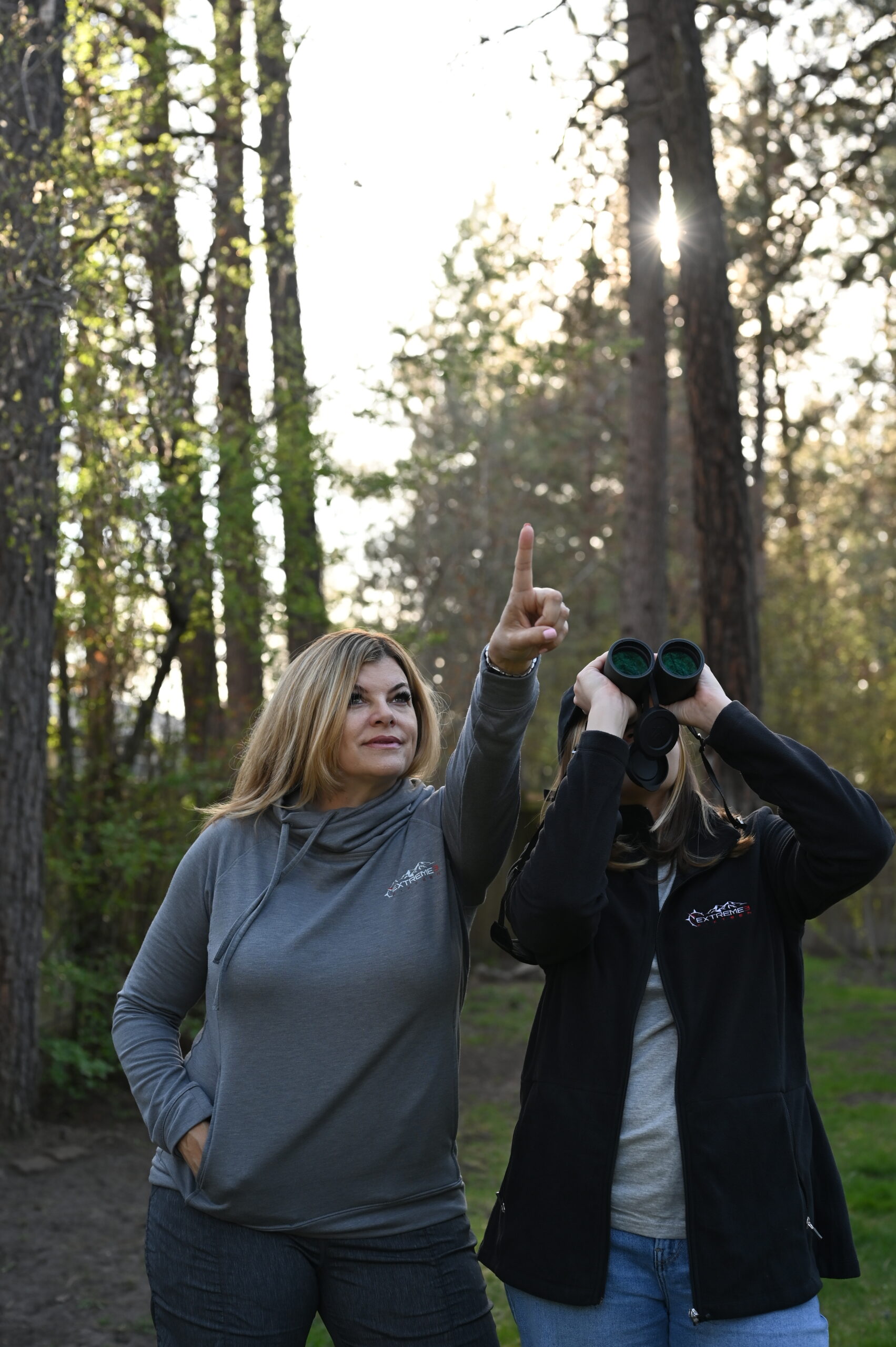
Join our journey!
Subscribe to our Newsletter!
We spotlight incredible groups offering essential services and training for outdoor aficionados.
Sign up and receive a FREE Extreme3 Fifteen sticker!

